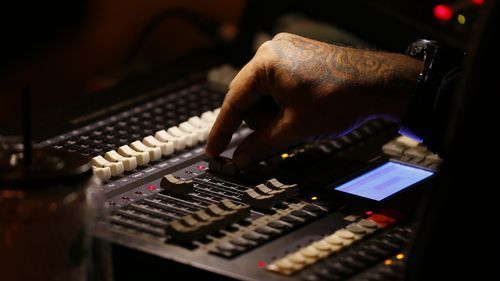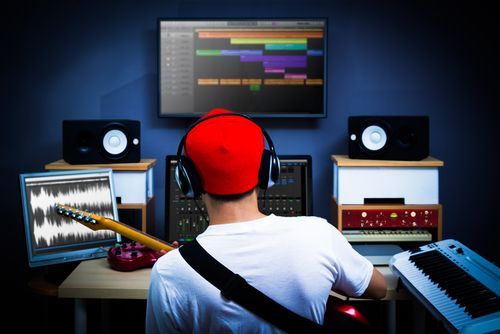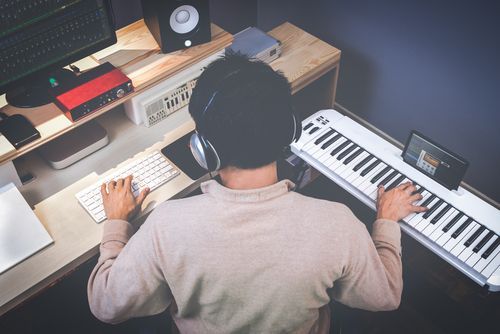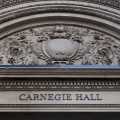Live music simply isn’t what it used to be. A couple of decades ago, bands were limited to the sounds their instruments and voices could make, but performers are now able to bring virtually any type of sound combination to the stage by way of backing tracks. But adding more rhythms, samples and textures of sound to your live performance can be some seriously tricky business, and a poorly constructed backing track has the potential to ruin your entire performance. To help you master the art of performance backing tracks, we’ve assembled 10 tips for you in this article. Let’s jump in.
Tip #1: Nail down your entrances
 Backing tracks can add an entirely new depth and atmosphere to your live performance, but the timing of entrances is absolutely crucial. If your backing track comes in at the wrong time, your performance will most likely be ruined. The major risk of using this technology in your live performances is that pre-recorded beats and sounds pumped through backing tracks don’t have the ability to recognize and recover from mistakes like humans do.
Backing tracks can add an entirely new depth and atmosphere to your live performance, but the timing of entrances is absolutely crucial. If your backing track comes in at the wrong time, your performance will most likely be ruined. The major risk of using this technology in your live performances is that pre-recorded beats and sounds pumped through backing tracks don’t have the ability to recognize and recover from mistakes like humans do.
So, how can we avoid embarrassing performance track misfires? Having a clear understanding of how backing tracks are constructed is key here, and that will change depending on the sound of the backing track, method you’ve used to create it and software program you built it in.
Backing tracks with loose, ambient sounds are much easier to work with than ones with distinct percussion sections, bass lines and any other instrumentation with timed entrances. For these kind of backing tracks, you’ll have to create a separate metronome track that’s sent only to your headphones. It takes a ton of practice and trial and error to get these timed backing tracks to work just right, so don’t hit the stage until you’re absolutely ready.
Tip #2: Mix your backing tracks with the venue’s sound system in mind
 If your band is embarking on a tour where you’re slated to play smaller DIY venues and house shows, then performing with stereo backing tracks laden sound effects like reverb and delay might actually hurt your performance rather than help it. Not all sound systems are created equally, and some sound setups aren’t equipped to handle stereo tracks.
If your band is embarking on a tour where you’re slated to play smaller DIY venues and house shows, then performing with stereo backing tracks laden sound effects like reverb and delay might actually hurt your performance rather than help it. Not all sound systems are created equally, and some sound setups aren’t equipped to handle stereo tracks.
Pumping stereo backing tracks through one of these systems could potentially remove integral instrumentation in your songs, and that could be detrimental to your live performance. To avoid this risk, do everything you can to research the sound systems at the venues you play at and mix accordingly. Nicer, more established venues will be able to handle stereo backing tracks, so if you exclusively perform at places like these, stick to mixing and bouncing your tracks in stereo. But if you have any doubts as to the types of places your band is scheduled to perform at, play it safe and mix your tracks in mono.
Tip #3: Take some time getting a clean mix of your performance tracks before you play live
Before you even think about bringing your backing tracks to a live setting, it’s essential that you take some time to get a strong, clear mix of each track first. Tracks where key parts of the instrumentation (percussion or bass, for example) are too loud or soft will sound muddled, weak or overpowering over a venue’s stereo system, and this will detract from your live performance.
Ultimately, the backing tracks you perform with at band practice will sound different at the venues you play at, so try listening to your mixed tracks in a few different settings before you settle on a final performance mix.
The type of backing tracks you have planned for your performances should inform your mixing process here. For example, if you’re a rapper that needs crisp, fully formed tracks to support your live performances, your mixing process will essentially mirror the one you’d go through if you were producing an instrumental song. If you’re a 3-piece band that wants to add a backing track of just bass sounds, then the mixing process will be much less cumbersome. Know your backing track needs and limitations first, and then mix accordingly.
Tip #4: Less is usually more when it comes to backing tracks
 Backing track performance technology gives you limitless access to textures of sounds during live performances, but adding too many layers of sound could complicate and sour your performances. Like in songwriting itself, it’s typically more effective to embrace limited instrumentation in your backing tracks over pumping as much sound into your performances as possible.
Backing track performance technology gives you limitless access to textures of sounds during live performances, but adding too many layers of sound could complicate and sour your performances. Like in songwriting itself, it’s typically more effective to embrace limited instrumentation in your backing tracks over pumping as much sound into your performances as possible.
Mixing lots of moving instrumental sections in with your own live instrumentation is really difficult, tedious work, and adding in sound textures just for the sake of it probably won’t do anything to enhance your live performances. Distilling your backing tracks down to their most basic needed instrumentation will help make your shows sound clearer and more compelling. Add in only what you need, and make sure the sounds you include are crisp and distinct.
Tip #5: Try to rely on backing tracks as little as possible–if you’re in a band
 When most people go to see live music, they want to see something raw and magical happen right in front of them and in the moment. Relying on backing tracks too much, even if they’re mixed properly and correctly constructed, leaves your performance at risk for the magic and urgency to get sucked out of it. Depending on your performance setup, it’s ideal for the audience to be completely unaware that a part of the sound they’re hearing live isn’t being generated right in front of them.
When most people go to see live music, they want to see something raw and magical happen right in front of them and in the moment. Relying on backing tracks too much, even if they’re mixed properly and correctly constructed, leaves your performance at risk for the magic and urgency to get sucked out of it. Depending on your performance setup, it’s ideal for the audience to be completely unaware that a part of the sound they’re hearing live isn’t being generated right in front of them.
This is another reason to embrace minimalism when it comes to backing tracks. Keeping things simple by only using the parts you need for your backing tracks will help your shows sound clearer and will be more compelling for the audiences you perform in front of.
This advice probably won’t be helpful to you if you’re a solo artist that plans on using backing tracks to fill out what would otherwise be a sparse performance on stage. There’s nothing wrong with relying on various rhythms, textures and soundscapes for playing solo live, but your challenge is to be as compelling as possible while relying on backing tracks to provide most of your instrumentation during performances.
Yes, the cat’s out of the bag so to speak as far as the audience knowing where most of the sounds you’re playing are coming from, but it doesn’t mean your performance has to be predictable or boring. Like any musical pursuit, getting your backing tracks just right is a process of trial and error, so give yourself plenty of time to see what works for you.
Tip #6: Try out new backing track mixes at low-pressure shows
Debuting a song with a newly mixed backing track section at a huge sold-out show you were just asked to open is probably a bad idea. Again, us humans are able to detect and recover from mistakes, but a bad backing track will just keep going and going, and this could ruin an important show. Using pre-recorded instrumentation in your live performances is a situation where a lot can go wrong, so playing songs with backing tracks you’re not 100% sure of at big shows could be a recipe for disaster.
To get your tracks right where you want them, you’ll need to play them at band practice and at least one venue in town. Yes, this is a lot of work, but testing out your tracks this way can help your important shows run as smoothly as possible.

Tip #7: Make sure the device you run tracks through can’t receive texts, emails or notifications with sound
This might seem like an obvious tip, but it’s a crucial one. If you’ve bounced your performance tracks down to mp3s and plan on using your phone, tablet or laptop to run them through live, then you need to make absolutely sure that your device can’t make noises outside of what’s being played on the tracks during the show. Calls, texts, software updates and internet notifications have the potential to tarnish your live performance.
Using old iPods that can’t connect to the internet is a good way to avoid any potential sounds that smart devices could make during your performance. Smartphones are the easiest choice for backing tracks, but you’ll need to remember to put them on airplane mode every time you perform, or else you run the risk of a song being interrupted with unneeded sounds.
It’s also hugely important that the device you use for your backing tracks is fully charged and ready to go. If the device you’re using to run tracks through runs out of juice during a performance, then you’ve got a real trainwreck on your hands, especially if your drummer is reliant on the metronome.
Tip #8: Know the difference between performance backing tracks and click tracks and mix accordingly
To make most backing tracks work, you’ll need to mix a separate click track that’s only sent to your band during live performances. Some bands who don’t use backing tracks still prefer to perform to a click track because it keeps them tight and precise. In those cases, the audience never hears the sound of the metronome, and bands typically listen to the click track with sets of headphones or in-ear monitors.
Backing tracks are layers of synchronized instrumentation that the audience is meant to hear. These tracks are almost always attached to a click track that’s only heard by the band. This is because it’s virtually impossible to perform to a backing track without knowing when exactly it comes in. Both backing and metronome click tracks are frequently used by performers, and the mixing process greatly differs in both (it’s much easier to mix and bounce click tracks than backing tracks).
Tip #9: Record your performances and critique your mixes
 This is another obvious tip, but it’s important. You won’t be able to fully gauge how strong your backing track mixes are until you hear them played alongside your own instrumentation in a live performance. Recording yourself live and hearing your entire set put together with backing tracks is the only way for you to be able to tweak the sound of things to get it just how you want it.
This is another obvious tip, but it’s important. You won’t be able to fully gauge how strong your backing track mixes are until you hear them played alongside your own instrumentation in a live performance. Recording yourself live and hearing your entire set put together with backing tracks is the only way for you to be able to tweak the sound of things to get it just how you want it.
Some venues will record your live set for a fee, or you can bring a friend to do it for you. Try your best to get strong, clear recording of your set. Recordings made on your cell phone won’t give you a good enough picture of what your set really sounds like.
Tip #10: Ask yourself if you really need backing tracks in your music
Just because you can use backing tracks in your live performances doesn’t mean that you should. Performance tracks add a new host of worries, concerns and potential trouble for your live set, and they’re not always worth it. Before investing the time creating and practicing to them, ask yourself why you or your band really needs them in the first place.
Again, people usually see live music because it’s an organic experience that happens right in front of an audience’s eyes. Creating the sounds with living, animated people instead of with backing tracks is usually a better idea for live settings because it’s simply a more exciting and engaging experience for audiences.
If your music is filled with layers of intricate instrumentation, you might not be able to do this, and that’s completely fine. You shouldn’t let live performance limitations dictate the way you make music. But bringing the depth and vibrancy found in your recordings to your live performances will inevitably be a big challenge. Sometimes stripping your music down to its bare essentials is the best option for performances whether you use a backing track or not.
We hope these tips help you get the most out of your backing tracks, and remember, there’s no set-in-stone recipe when it comes to anything having to do with live performances. Find out what works for you and go for it. For more helpful articles about the world of music, check out the Musika Lessons blog.







